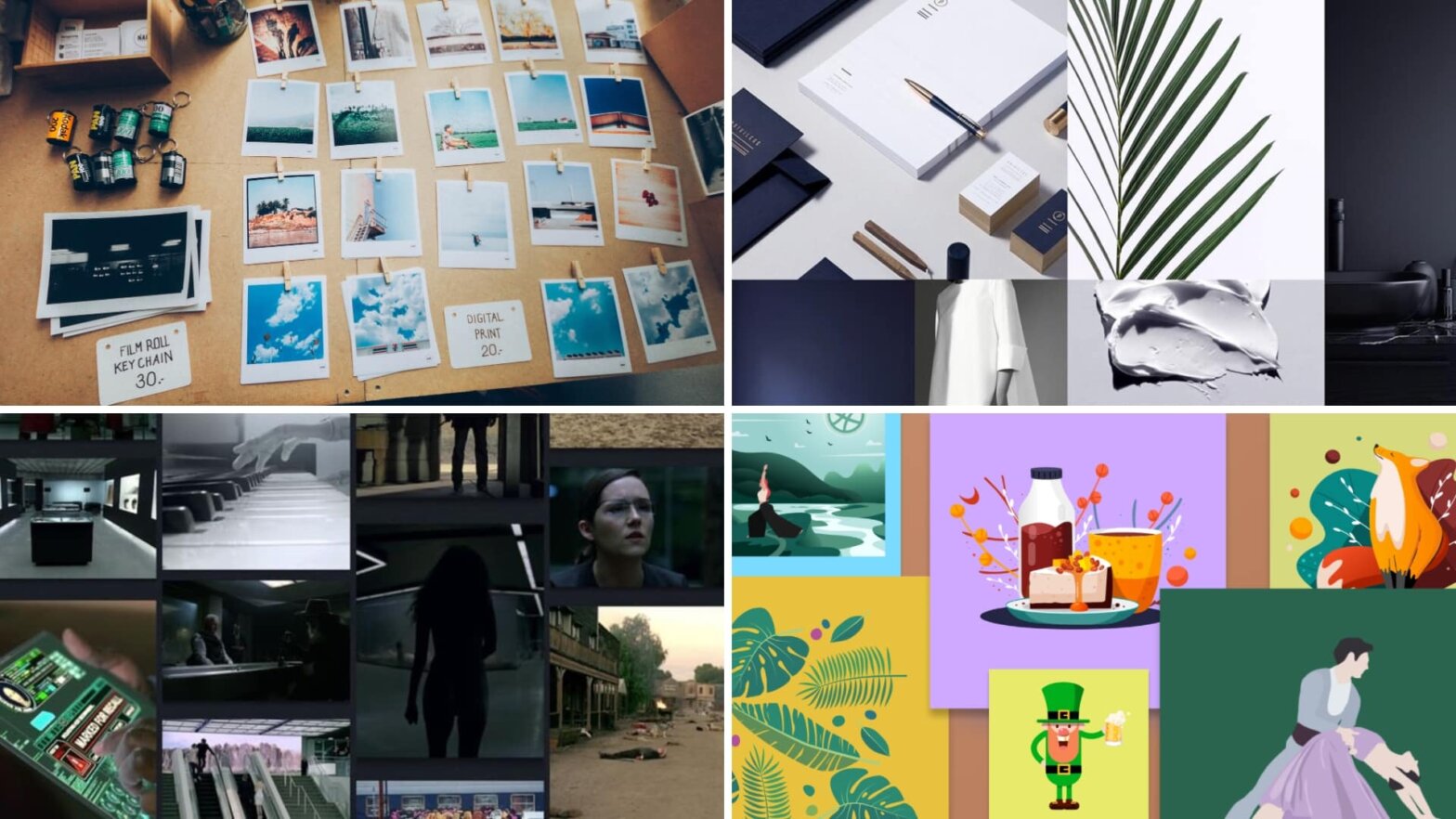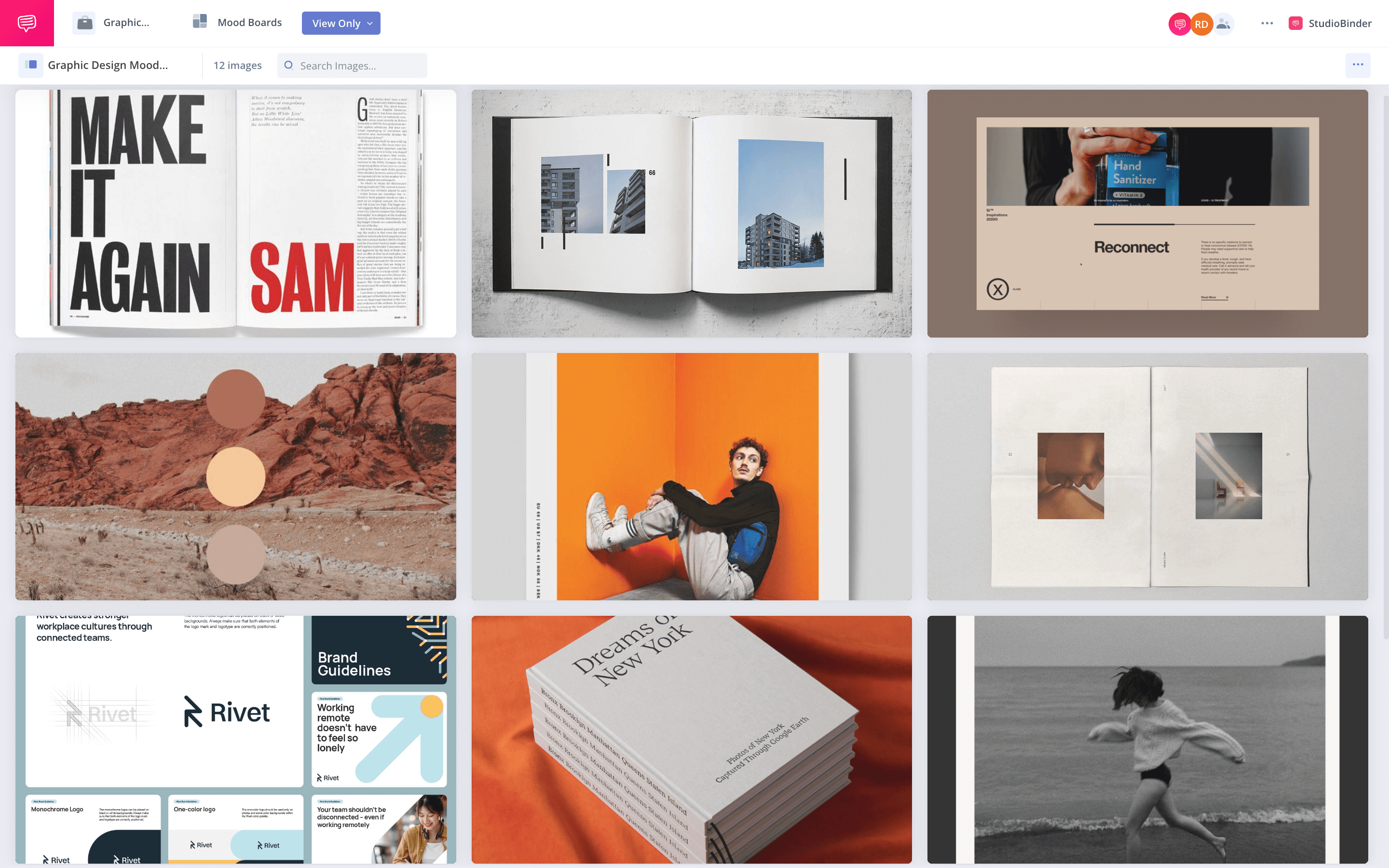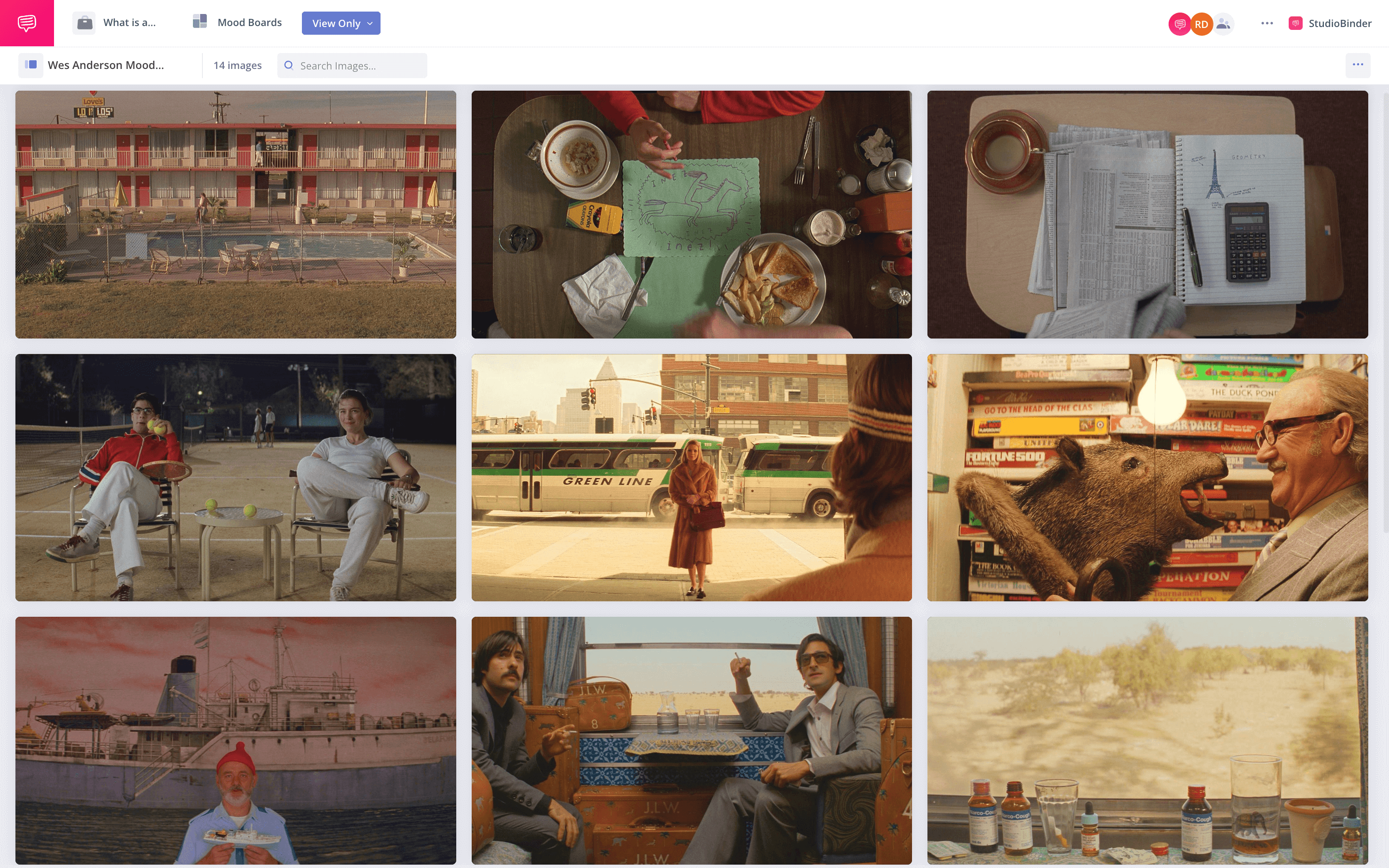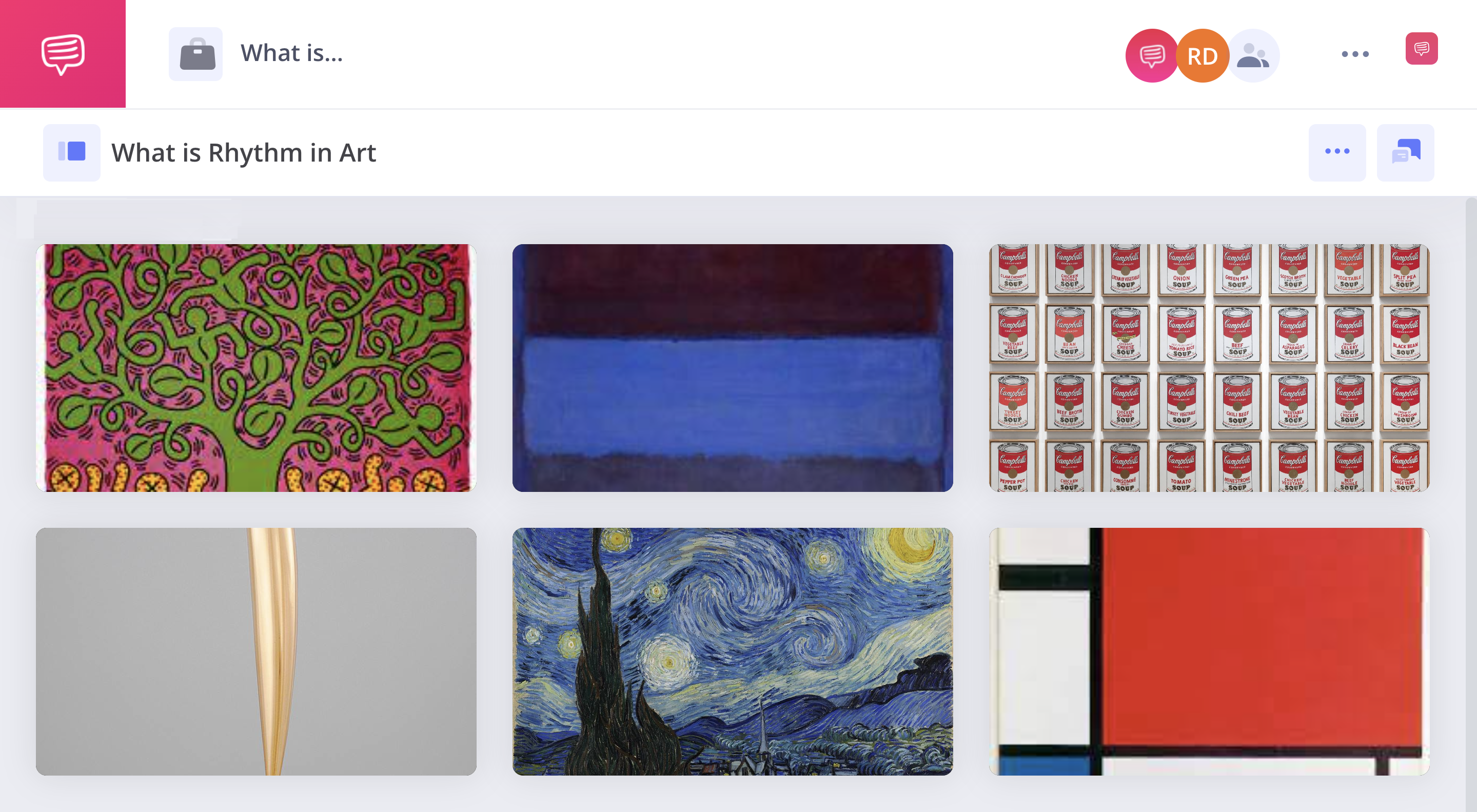Have you ever found yourself struggling to articulate your creative vision? If so, then you’re in luck. Mood boards are a great tool for bringing together all of the ideas that have been swirling around in your head into one place.
But what is a mood board exactly and how can it help you achieve the results you desire? Let’s take a look at what a mood board is, how it can be used, and why it’s helpful.
What is a Mood Board in Art?
First, let’s define mood board
Mood boards can be used as inspiration for any kind of creative project, from designing a movie set to creating a work of art. To understand the moodboard meaning and their value, let’s take a look at the mood board definition.
MOOD BOARD DEFINITION
What is a mood board?
A mood board is essentially an arrangement of images that evoke certain feelings or emotions. They can be made up of anything from photos to drawings to textiles — anything that conveys the desired “vibe” or feeling.
They can be physical or digital collections of materials that relate to the theme or message of the project. For example, if you were designing a movie set, your mood board might include photos of different places that match the aesthetic you want to create on screen. This allows you to convey your vision in an organized way without having to explain it in words.
Mood boards are often used when creating art or design projects as it can help give direction and provide inspiration. It helps narrow down the focus of your project and serves as an important reference point throughout the creative process.
What industries use mood boards?
- Film
- Fashion
- Architecture
- Design
What is a Mood Board Used For?
Why are mood boards helpful?
The main advantage of using a mood board is that it helps you quickly organize all of your thoughts into one cohesive package. It gives everyone involved in the project — including yourself — a clear view of what direction the project should take and where it should end up.
To get a better idea of a mood board layout and why a mood board is helpful for any creative project, we used the StudioBinder mood board app to create a design mood board example. Check it out below.
Design Mood Board Example
Mood boards also help keep everyone focused on achieving the same goal by providing an easy-to-follow roadmap instead of relying on verbal communication alone. Finally, they can provide powerful motivation when tackling challenging projects because they serve as a reminder of what inspired the idea in the first place.
Related Posts
Mood Board Meaning in Film
Mood Boards in Cinema
In cinema design, mood boards are used to convey the overall “look” and feel of a particular scene or film project. They can also be used to quickly illustrate how various elements will fit together in order to create an effective aesthetic. This is heavily important for auteur filmmakers who have a very distinct vision of how a film will look and feel to an audience.
For example, Wes Anderson has a very distinct style. From cinematography, to production design, to wardrobe, Anderson has a specific vision for every film that would greatly benefit from a mood board. Check out a break down of Wes Anderson’s style in the video analysis below.
The Wes Anderson Style Explained • Subscribe on YouTube
If you’re designing a movie set, you might use images of furniture pieces, fabrics, lighting fixtures, etc., all arranged together on one mood board in order to give an indication of what the completed space will look like.
To get a better idea on how to make a film mood board, we used the StudioBinder mood board app to create a Wes Anderson mood board.
Check it out below.
Wes Anderson Mood Board Example
What is a Mood Board in Art?
Mood boards in art & design
Mood boards are also incredibly useful when creating works of art such as paintings or sculptures. While the details of a mood board can change medium to medium, the mood board meaning is to serve as both inspiration and reference points during the creative process.
A mood board might include images that evoke certain feelings or concepts which can then be incorporated into your artwork in some way—they don’t necessarily have to be literal representations but rather something more abstract or symbolic that fits with your overall vision for the piece.
For example, the image below is clearly raindrops on a window in a city. However, the image itself poses a very distinct texture and mood that can be used in a variety of ways in a mood board. In a photography mood board this image can be used a reference for a specific feeling.
What is Rhythm in Art Mood Board Example
All in all, mood boards are invaluable tools for anyone working on any kind of creative project — from filmmaking and interior design to painting and sculpting.
By collecting images that conjure certain feelings or emotions related to your project concept, you can gain insight into how your project should look or feel before you even begin working on it. So if you’re ever stuck while working on a creative endeavor, try making yourself a mood board; it just might help get those creative juices flowing again.
UP NEXT
How to Create a Mood Board
As we mentioned above, a mood board is an incredible tool for creatives of any medium. To learn how to create your own mood board for your project, check out the guide in our next article.
Up Next: How to Create a Mood Board →
Showcase your vision with elegant shot lists and storyboards.
Create robust and customizable shot lists. Upload images to make storyboards and slideshows.



